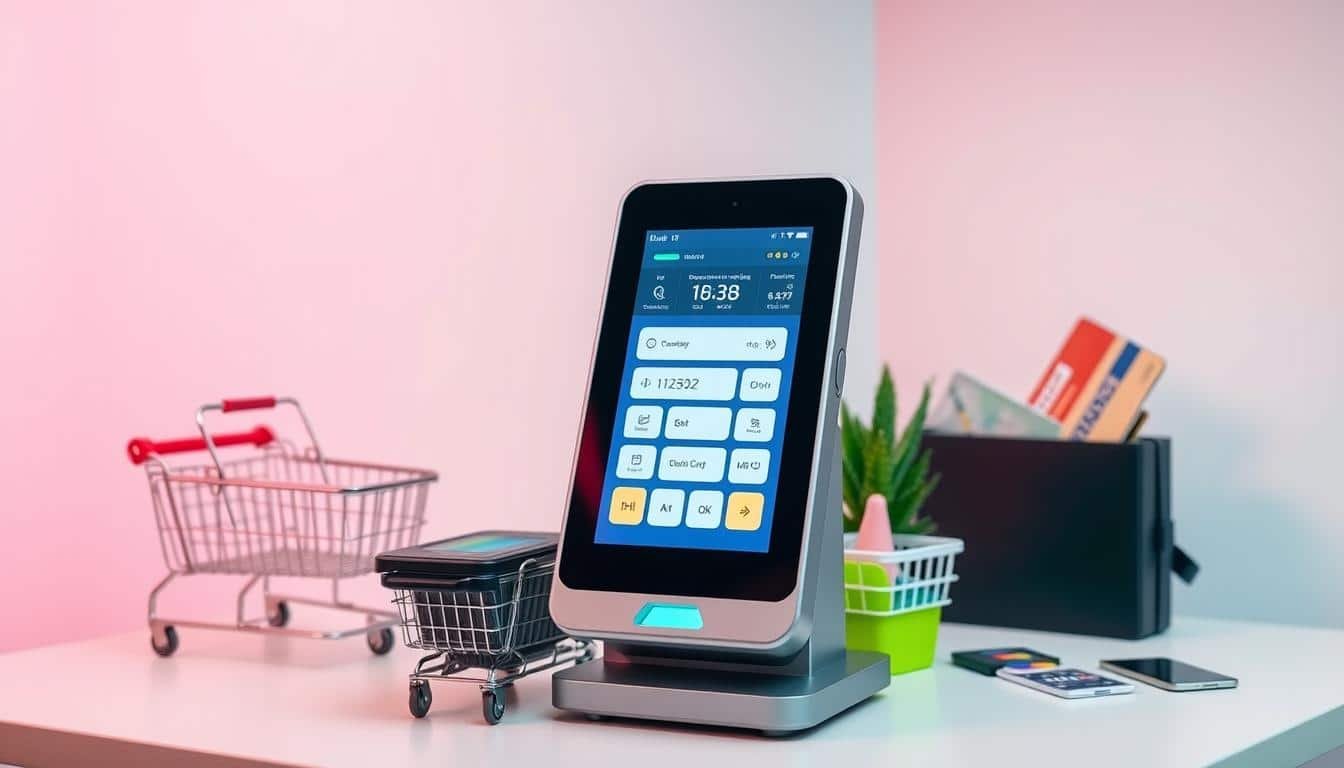An emergency fund is a key financial tool. It acts as a safety net against unexpected costs or financial crises. It’s a stash of cash ready to help cover sudden expenses like car repairs or medical bills. It also helps when you lose your job.
Q: What is an emergency fund and why do I need to establish an emergency fund?
A: An emergency fund is a savings account designated for unexpected expenses or financial emergencies, such as medical bills or loss of income. Establishing an emergency fund helps you avoid debt and provides financial security.
Q: How much should I save in my emergency savings fund?
A: Financial experts recommend saving at least three to six months’ worth of expenses in your emergency savings fund. The exact amount will depend on your individual circumstances, such as your job stability and monthly expenses.
Q: What is the best place to keep my emergency fund?
A: The best place to keep your emergency fund is typically a high-yield savings account or a checking and savings account that offers easy access to your funds. This allows you to earn interest while keeping your money readily available for emergencies.
Q: How can I calculate how much I need to save for my emergency fund?
A: You can use an emergency fund calculator to determine how much you need to save. This tool will help you factor in your monthly expenses and suggest a target amount based on your needs.
Q: Can I stash my emergency fund in an investment account?
A: While you can stash your emergency fund in an investment account, it’s not recommended. Investment accounts can be volatile, and you need quick access to your funds in case of an emergency. A high-yield savings account is generally a safer option.
Q: How do I start an emergency fund if I have credit card debt?
A: Start by building a small emergency fund of at least $500 to $1,000, which can help cover minor emergencies. Once this initial fund is established, continue to pay down your credit card debt while gradually increasing your emergency savings.
Q: What is the difference between an emergency savings account and a regular savings account?
A: An emergency savings account is specifically for unexpected expenses, while a regular savings account can be used for various savings goals. Emergency savings accounts typically offer higher interest rates and are designed for easy access in emergencies.
Q: How can I keep my emergency fund growing over time?
A: You can keep your emergency fund growing by setting up automatic transfers from your checking account to your emergency savings account through direct deposit. This will help you consistently add to your fund without needing to think about it.
Q: What should I do if I need to use my emergency savings fund?
A: If you need to use your emergency savings fund, assess the situation and withdraw only the amount you truly need. Afterward, prioritize replenishing your emergency fund as soon as possible to maintain your financial security.
Using an emergency fund means you don’t have to turn to credit cards or loans. These can lead to debt. Studies show that those who face financial shocks often have less savings. This makes an emergency fund essential for financial stability.
Key Takeaways
- An emergency fund is a cash reserve set aside for unexpected expenses or financial emergencies.
- Building an emergency fund can help avoid relying on credit cards or loans, which can lead to debt.
- The recommended amount for an emergency fund is typically three to six months’ worth of living expenses.
- Strategies like automatic savings transfers and managing cash flow can help individuals consistently contribute to their emergency fund.
- Having a dedicated bank account or credit union account is considered a safe place to keep emergency savings.
What is an Emergency Fund?
An emergency fund is a special savings account for unexpected costs. It helps avoid using credit cards or loans, which can lead to debt. Having one means you’re ready for financial surprises and keep your finances safe.
Defining an Emergency Fund
An emergency fund is for unplanned expenses like car or home repairs, medical bills, or losing a job. It’s different from your everyday accounts. Aim to save enough to cover three to six months of living costs. This way, you won’t have to use high-interest credit cards for emergencies.
- Emergency funds are kept in a savings account, money market account, or other bank account that is easily accessible.
- The amount you save for your emergency fund should be based on your monthly living expenses, not your total income.
- Experts recommend setting aside at least three to six months’ worth of essential expenses in your emergency fund.
- Contribute to your emergency fund regularly, even if it’s just a small amount each month, to build an emergency fund over time.
With a good emergency fund, you won’t need to borrow money or use your investments for unexpected costs. This keeps your finances stable and secure.
Why Do You Need an Emergency Fund?

An emergency fund is key to financial safety. It helps you deal with life’s surprises. Without enough savings, even small issues can cause big problems, leading to debt.
Having an emergency fund means you can face unexpected costs without debt. It keeps you from falling into financial trouble. This way, you avoid the dangers of high-interest debt.
The role of an emergency fund is huge. It protects you from life’s ups and downs. It keeps your finances stable and your mind at ease. An emergency fund can be the lifeline during tough times.
“Every investor should aim to save enough cash to cover at least six months of living expenses in case of an unexpected income disruption or major unplanned expense.”
Creating an emergency fund shields you and your family from financial stress. It’s a smart way to save for the unexpected. This way, you’re ready for anything without risking your financial future.
How Much Should You Save in Your Emergency Fund?

Many people wonder how much to save for an emergency fund. The common advice is to save three to six months’ worth of living expenses. This helps protect you from sudden expenses and job loss.
To figure out how much to save, think about your usual unexpected costs. If you’re always short on cash, even a little saved can help. The goal is to start saving and increase the amount as you can.
Determining the Right Amount
Here are some tips to find out how much to save:
- First, add up your monthly bills like rent, utilities, and food.
- Then, multiply that total by three to six to find your savings goal.
- Look at your bank statements for any surprise expenses.
- Think about your job and income stability. If it’s steady, you might need less.
- Start with a small amount, like $25 or $50 a month, and grow it over time.
Remember, an emergency fund is for tough times. By figuring out how much to save, you can plan to build up your fund. This will help you feel more secure financially.
“The emergency fund is money set aside to cover unexpected expenses or income loss. It’s a financial safety net that can help you avoid going into debt during a crisis.”
Building Your Emergency Fund

Building an emergency fund is key to financial stability. It helps you deal with unexpected costs like job loss or medical emergencies. Here are some ways to build your emergency fund:
- Create a Savings Habit: Start by saving a little each month, even if it’s just a few dollars. Increase your savings over time to reach your goal.
- Manage Your Cash Flow: Look at your monthly spending and find ways to cut back. Use that money for your emergency fund.
- Take Advantage of One-Time Opportunities: Use windfalls like tax refunds or bonuses to boost your emergency fund.
- Automate Your Savings: Set up automatic transfers from your checking to your emergency fund. This makes saving easy.
- Leverage Employer Contributions: If your employer matches your savings, take advantage of it. It can help you save more.
The best place for your emergency fund is a safe, easy-to-access account. Savings or money market accounts at banks or credit unions are good choices. They often have higher interest rates than checking accounts.
Also Read: Impact Of Credit Risk On Interest Rates And Loan Terms
Start small and build your emergency fund gradually. Aim to save enough for three to six months of living expenses. This can help you avoid debt and financial stress.
| Savings Strategy | Potential Emergency Fund Growth |
|---|---|
| Saving $100 per month | $1,200 after 1 year |
| Saving $50 per paycheck (bi-weekly) | $1,300 after 1 year |
| Saving $75 per month and $50 per paycheck | $1,500 after 1 year |
By following these tips and staying committed, you can build a financial safety net. This will help you face unexpected challenges and feel more secure.
“An emergency fund is the cornerstone of a solid financial plan. It can help you avoid going into debt and protect your financial stability in times of crisis.” – Financial Expert, Jane Doe
Conclusion
An emergency fund is key to financial security. It helps when unexpected costs or job loss happen. Saving three to six months’ worth of expenses in an easy-to-access account is smart. This way, you avoid high-interest debt.
Building an emergency fund takes time and effort. But, the peace of mind and protection it offers are priceless. Start with a small amount and add more as you can. This will help you reach your goal.
Remember, your emergency fund is for tough times. Use it wisely and refill it when needed. Experts say save at least three to six months’ salary. Setting a plan and automating savings can make it easier.
Having an emergency fund is crucial for everyone. It’s a safety net against financial surprises. By saving, you avoid the stress of high-interest debt. So, figure out how much you need and start saving today for peace of mind and security.
FAQs
Q: What is an emergency fund and why do I need to establish an emergency fund?
A: An emergency fund is a savings account designated for unexpected expenses or financial emergencies, such as medical bills or loss of income. Establishing an emergency fund helps you avoid debt and provides financial security.
Q: How much should I save in my emergency savings fund?
A: Financial experts recommend saving at least three to six months’ worth of expenses in your emergency savings fund. The exact amount will depend on your individual circumstances, such as your job stability and monthly expenses.
Q: What is the best place to keep my emergency fund?
A: The best place to keep your emergency fund is typically a high-yield savings account or a checking and savings account that offers easy access to your funds. This allows you to earn interest while keeping your money readily available for emergencies.
Q: How can I calculate how much I need to save for my emergency fund?
A: You can use an emergency fund calculator to determine how much you need to save. This tool will help you factor in your monthly expenses and suggest a target amount based on your needs.
Q: Can I stash my emergency fund in an investment account?
A: While you can stash your emergency fund in an investment account, it’s not recommended. Investment accounts can be volatile, and you need quick access to your funds in case of an emergency. A high-yield savings account is generally a safer option.
Q: How do I start an emergency fund if I have credit card debt?
A: Start by building a small emergency fund of at least $500 to $1,000, which can help cover minor emergencies. Once this initial fund is established, continue to pay down your credit card debt while gradually increasing your emergency savings.
Q: What is the difference between an emergency savings account and a regular savings account?
A: An emergency savings account is specifically for unexpected expenses, while a regular savings account can be used for various savings goals. Emergency savings accounts typically offer higher interest rates and are designed for easy access in emergencies.
Q: How can I keep my emergency fund growing over time?
A: You can keep your emergency fund growing by setting up automatic transfers from your checking account to your emergency savings account through direct deposit. This will help you consistently add to your fund without needing to think about it.
Q: What should I do if I need to use my emergency savings fund?
A: If you need to use your emergency savings fund, assess the situation and withdraw only the amount you truly need. Afterward, prioritize replenishing your emergency fund as soon as possible to maintain your financial security.
Source Links
- https://www.consumerfinance.gov/an-essential-guide-to-building-an-emergency-fund/
- https://www.nerdwallet.com/article/banking/emergency-fund-why-it-matters
- https://www.investopedia.com/terms/e/emergency_fund.asp






